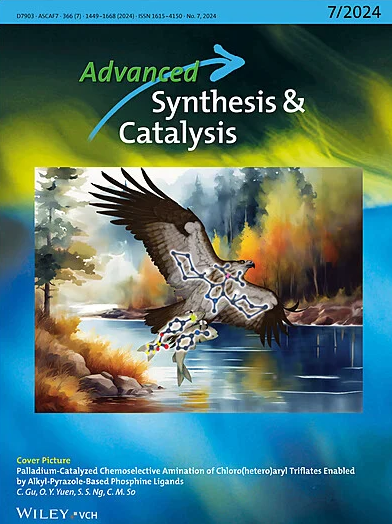Advances of chiral metal complexes as standalone photocatalyst for asymmetric organic transformations
IF 4.4
2区 化学
Q2 CHEMISTRY, APPLIED
引用次数: 0
Abstract
Many enantiopure chiral organic molecules are very important unit for drug discovery. Ready access to a wide range of enantiopure organic compounds, attached with one or more chiral centres significantly enhance the quality and diversity of chemical libraries for screening of drug discovery. The ability to control the stereochemistry of many organic reactions remains an area of interest in organic synthesis to allow the development of novel, structurally diverse 3D molecules. Asymmetric catalysis has been extensively studied for controlling the stereochemistry in modern synthetic organic chemistry. Recently, the use of light as the energy source with a chiral photocatalysts for photocatalytic asymmetric organic reactions has drawn much attentions but limited in numbers. The short lifetime of excited chiral photocatalysts and very fast reactions make the stereocontrol difficult in many reactions. However, by making a chiral photoactive metal complex with a suitable metal and ligands, this problem could be solved. As these chiral metal complexes are stable under light irradiation, versatile, having easy tuneable properties, these can provide more chiral inductions in many asymmetric organic reactions. So, in this review, we have focused on the recent development on chiral metal complexes as the standalone chiral photocatalysts for asymmetric organic reactions. We hope this review will help to understand the scopes and limitations to the research community in the field of asymmetric synthesis.求助全文
约1分钟内获得全文
求助全文
来源期刊

Advanced Synthesis & Catalysis
化学-应用化学
CiteScore
9.40
自引率
7.40%
发文量
447
审稿时长
1.8 months
期刊介绍:
Advanced Synthesis & Catalysis (ASC) is the leading primary journal in organic, organometallic, and applied chemistry.
The high impact of ASC can be attributed to the unique focus of the journal, which publishes exciting new results from academic and industrial labs on efficient, practical, and environmentally friendly organic synthesis. While homogeneous, heterogeneous, organic, and enzyme catalysis are key technologies to achieve green synthesis, significant contributions to the same goal by synthesis design, reaction techniques, flow chemistry, and continuous processing, multiphase catalysis, green solvents, catalyst immobilization, and recycling, separation science, and process development are also featured in ASC. The Aims and Scope can be found in the Notice to Authors or on the first page of the table of contents in every issue.
 求助内容:
求助内容: 应助结果提醒方式:
应助结果提醒方式:


